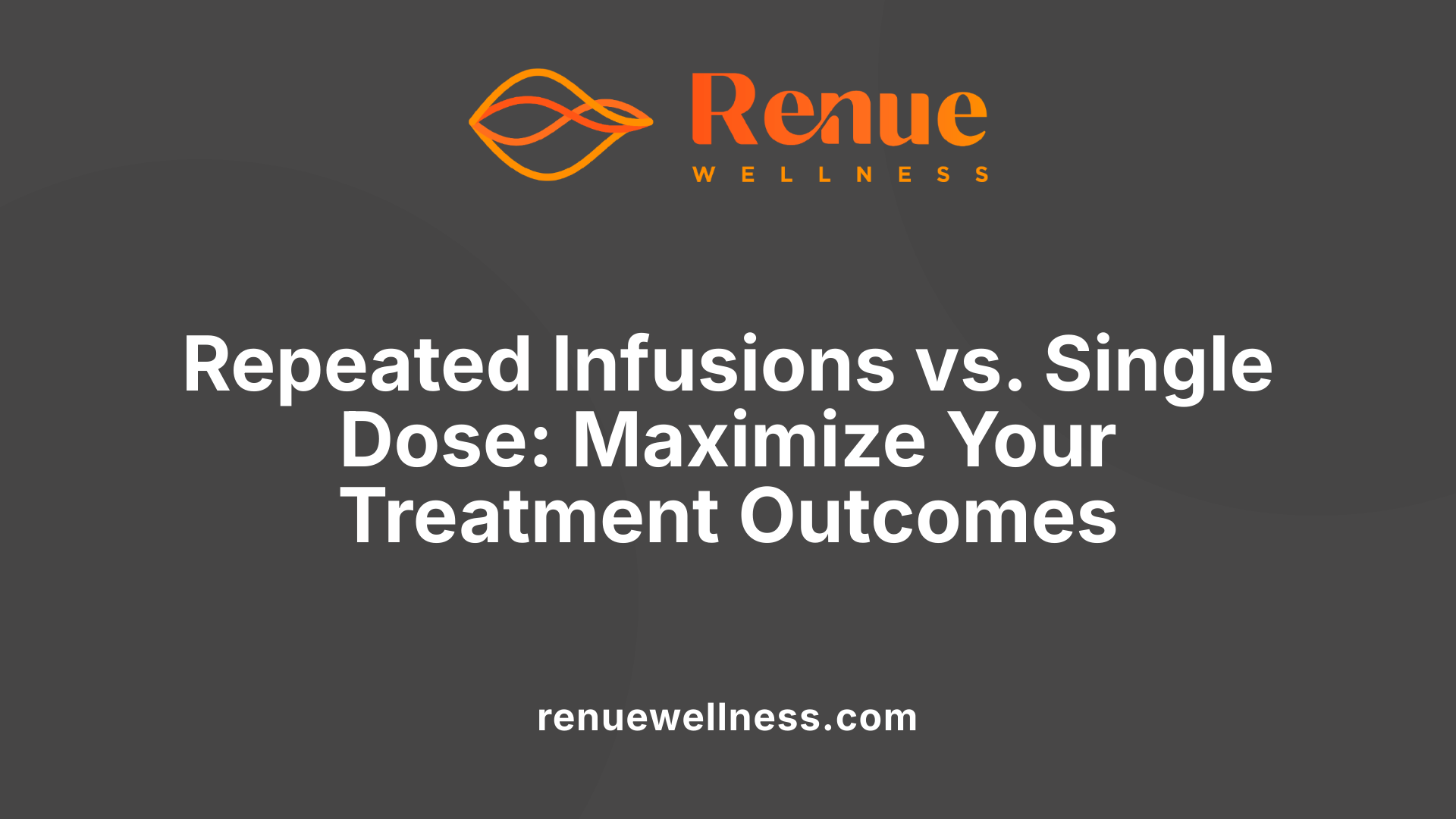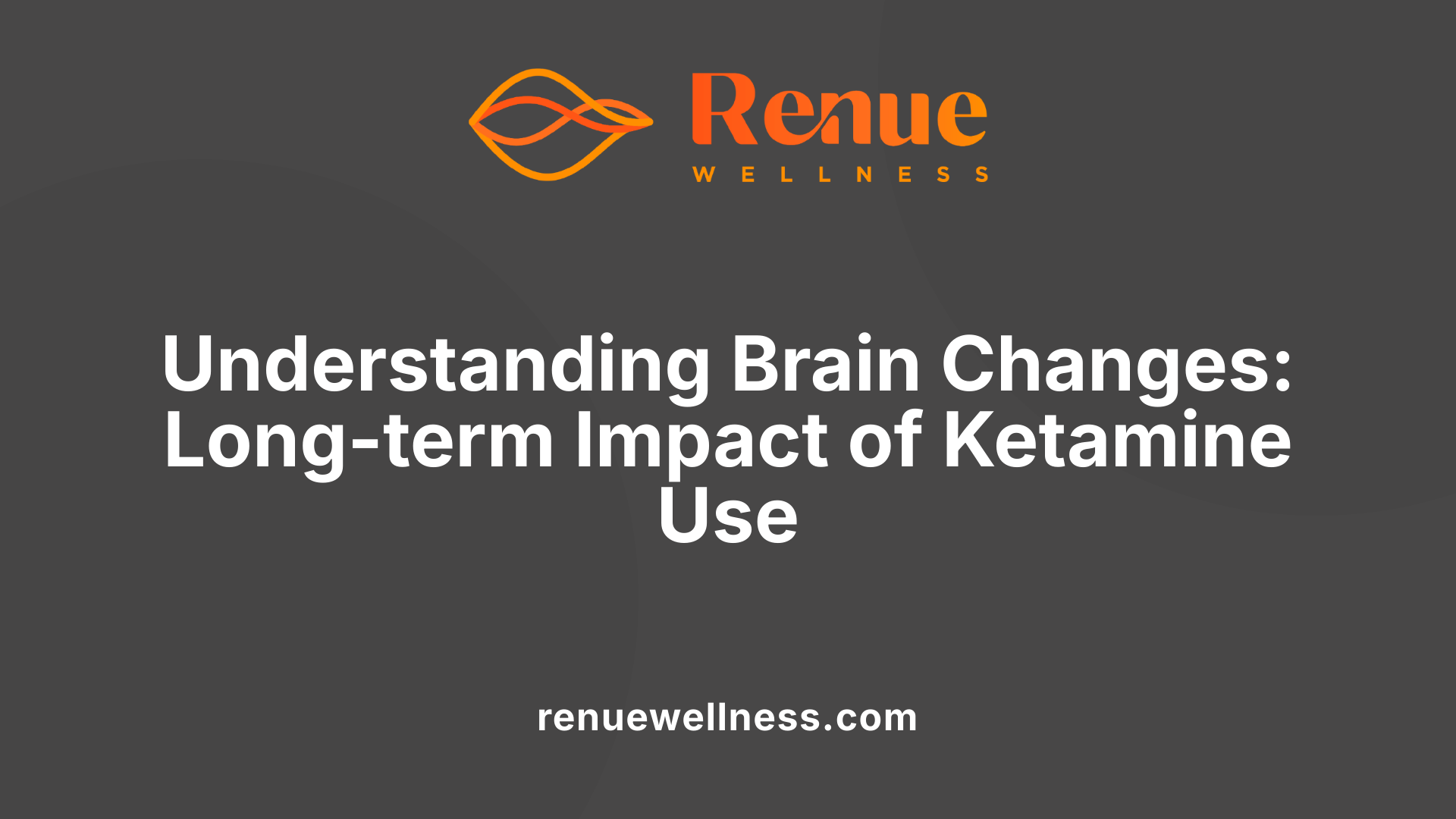Does Ketamine Work Better the Second Time Around?


July 17, 2025
Unraveling the Complexities of Ketamine Therapy for Major Depression
Ketamine has emerged as a promising treatment for treatment-resistant depression, appealing due to its rapid antidepressant effects. As research progresses, clinical protocols have evolved to include repeated infusions, but critical questions remain about their comparative effectiveness, safety, and long-term implications. This article delves into how subsequent ketamine treatments compare to initial administrations, the science behind treatment protocols, factors influencing responses, and the evolving landscape of ketamine therapy for depression.
Typical Protocols and Number of Sessions in Repeated Ketamine Therapy
Repeated ketamine infusions are regarded as a potent approach to managing depression, especially in cases resistant to other treatments. The standard protocol usually involves administering a series of 4 to 6 infusions spread across 1 to 2 weeks. Typically, clinicians give these infusions twice weekly, roughly every three to four days, to maximize efficacy.
Each infusion is generally a low dose, approximately 0.5 to 1.0 mg/kg, delivered intravenously over a 40-minute period. This dosing schedule has been supported by clinical studies showing significant improvements in depressive symptoms, with many patients responding after around three infusions.
Once an initial response is observed, usually by the third or fourth infusion, the treatment shifts toward maintenance. To sustain the antidepressant effects, patients often receive weekly booster infusions. This ongoing phase aims to prevent relapse and maintain remission, which can last from several weeks to months depending on individual factors.
The precise number of infusions varies according to patient needs, response to treatment, and protocol preferences. For some, a longer course may be necessary, with up to 10 or more infusions, while others might require fewer sessions. The spacing and frequency are adjusted based on ongoing assessments of symptom severity and side effects.
In summary, a typical ketamine treatment regimen starts with an initial course of 4 to 6 infusions over a couple of weeks, followed by personalized maintenance therapy. This structured approach aims to harness ketamine’s rapid antidepressant effects and sustain benefits through carefully timed boosters.
Maintenance Dosing and Scheduling After Initial Response

Is there a recommended maintenance dose or schedule for ketamine therapy in depression?
Currently, there is no single, universal protocol for maintenance ketamine therapy in treating depression. Since individual responses vary, clinicians personalize schedules based on how patients respond to initial treatments and their tolerance levels.
After completing an initial series, which typically involves 6 to 10 infusions over 3 to 4 weeks, many patients transition to maintenance therapy aimed at prolonging therapeutic effects. Maintenance infusions are generally administered at intervals ranging from every 3 to 4 weeks to every few months. Some clinics opt for a more flexible approach, providing boosters as needed based on symptom recurrence.
Dosage during maintenance often remains consistent with the initial dose, around 0.5 mg/kg administered intravenously, but can be adjusted. Adjustments may include altering the infusion duration or rate to optimize efficacy and minimize side effects.
It is crucial to regularly monitor patients for several factors:
- Symptom improvement and potential relapse
- Side effects like dissociation, dizziness, or visual disturbances
- Risks such as dependency or cognitive changes
This ongoing evaluation helps clinicians refine schedules, balancing benefits with safety concerns. Overall, maintenance protocols are tailored to individual needs, with flexibility to adapt as patient responses evolve.
See also: "Ketamine maintenance therapy schedules, dosing frequency, response monitoring" in recent clinical guidelines and research reviews to stay updated on evolving best practices.
Efficacy of Repeated Infusions Versus Single Ketamine Treatments

How does ketamine’s effectiveness compare between initial and subsequent treatments?
Research shows that ketamine has a rapid and notable impact on depression symptoms, especially during initial infusions. A single low-dose infusion can significantly reduce depressive and melancholic symptoms within 24 hours, with effects lasting up to a week. This immediate response makes ketamine a promising option for treatment-resistant depression.
However, repeated infusions carry additional benefits. Multiple sessions have been found to produce cumulative and more durable antidepressant effects. It is common for patients to experience a response rate of around 59% after undergoing several infusions, with the median number of infusions needed for noticeable improvement being three.
In contrast, some patients may experience a decrease in response to subsequent treatments over time. Despite this, many individuals who initially respond to ketamine can maintain their improvement with weekly or monthly booster infusions. These maintenance sessions help sustain remission, with some patients reporting prolonged relief from depression symptoms spanning several months.
While initial treatments tend to deliver quicker and stronger effects, subsequent infusions are still valuable in managing ongoing symptoms. They can help re-establish or prolong antidepressant benefits, although response rates may diminish with repeated attempts. Importantly, if a patient does not respond initially, alternative approaches like psychotherapy or other medications might be recommended.
Overall, the pattern observed suggests that ketamine’s early treatments tend to be more immediately effective, but repeated infusions play a crucial role in maintaining antidepressant effects over time. The decision to continue with multiple sessions depends on individual responses and the need to preserve remission.
Factors Influencing Response to Repeated Ketamine Infusions
Several elements impact how patients respond to repeated ketamine infusions for depression treatment. Patient demographics, such as age, gender, and developmental stage, can influence outcomes. Research indicates that females may be more sensitive to both the antidepressant effects and psychomimetic side effects of ketamine, possibly due to hormonal differences like estrogen and progesterone levels, which can provide protective effects against cognitive deficits.
Baseline severity of depression and early response to initial infusions are strong predictors of overall success. Patients showing quick improvements often continue to benefit from ongoing treatment. Biological markers, especially serum metabolites like kynurenine and kynurenic acid, are promising tools for predicting response and tailoring personalized treatment approaches.
Gender and hormonal factors also play a role. For example, females, especially those with higher ovarian hormone levels, tend to be more sensitive to ketamine's cognitive and addictive effects, while developmental factors can influence neuroplasticity and treatment efficacy.
Previous treatments and interactions with medications are critical considerations. For instance, benzodiazepines may diminish ketamine’s therapeutic effects. The overall treatment history helps determine appropriate dosing and duration.
Genetic and neurobiological factors further modulate response. Variations in neural circuits involved in reward, reinforcement, and plasticity affect both the antidepressant response and potential abuse risk. Repeated infusions often sustain antidepressant benefits without significant cognitive impairment or tolerance, though individual differences still dictate the degree of benefit experienced.
In summary, demographic variables, early clinical responses, biological markers, hormonal influences, prior treatments, and genetic factors collectively shape how patients respond to repeated ketamine infusions.
Scientific Evidence Supporting Repeated Ketamine Treatments
 Research indicates that multiple ketamine infusions offer more durable and potent antidepressant effects compared to a single dose. Clinical studies involving patients with treatment-resistant depression (TRD) demonstrate that while a single infusion can lead to rapid symptom improvement lasting about a week, repeated sessions result in cumulative benefits that extend longer.
Research indicates that multiple ketamine infusions offer more durable and potent antidepressant effects compared to a single dose. Clinical studies involving patients with treatment-resistant depression (TRD) demonstrate that while a single infusion can lead to rapid symptom improvement lasting about a week, repeated sessions result in cumulative benefits that extend longer.
In particular, repeated low-dose infusions can achieve a response rate of approximately 59%. The median number of infusions needed for response typically hovers around three. These effects can be maintained with weekly booster infusions, which help sustain remission and prevent gradual relapse.
Meta-analyses of randomized controlled trials further support the effectiveness of repeated dosing. They show that patients often experience significant reductions in depression severity that last from several weeks up to a few months, critical for managing TRD.
Comparison with single infusions highlights that while a single dose can quickly alleviate symptoms, the benefits may diminish after a week. Repeated infusions, by contrast, produce more sustained improvements and are associated with better overall outcomes for depressive symptoms, especially melancholic features.
However, safety remains a consideration. Evidence suggests that repeated treatments are generally well-tolerated in the short term, with common transient side effects such as dissociation, dizziness, and visual disturbances. Some reports also suggest potential neurocognitive effects and increased risk of dependence, especially in females, who seem more sensitive to ketamine’s addictive properties.
Animal studies point to neurobiological changes such as increased dendritic spine density and engagement of dopamine-mediated plasticity pathways, including Drd1 receptor activity, which are essential for its antidepressant effects. These mechanisms underline the complex interaction between ketamine’s therapeutic and potential abuse-related effects.
In conclusion, while multiple infusions can provide more robust and longer-lasting relief for depression, they also introduce safety concerns that warrant further detailed investigation. Ongoing research aims to optimize dosing protocols, minimize risks, and identify which patients are most likely to benefit from repeated ketamine treatments.
Safety Profile and Risks of Repeated Ketamine Administration

What are the safety considerations and potential risks associated with repeated ketamine use?
Repeated ketamine treatments have shown to be generally safe when conducted under professional medical supervision. Most side effects are temporary and include feelings of dissociation, dizziness, visual disturbances, and dizziness. These effects tend to decrease with successive infusions and often correlate with initial treatment responses.
Serious adverse effects such as bladder problems, long-term cognitive decline, or psychosis are rare based on current clinical data. Animal studies have suggested potential risks like behavioral sensitization and increased addictive tendencies, especially among females or during developmental periods, but these findings aren’t fully established in humans.
A common concern involves the potential for addiction. While some reports indicate ketamine may have reinforcing properties, especially in recreational settings, clinical use in controlled doses presents a much lower risk. Nonetheless, ongoing research continues to evaluate the long-term safety of repeated infusions.
Monitoring patients closely is crucial. Careful patient selection—excluding those with certain mental health histories or substance abuse issues—helps mitigate risks. Dosing protocols are designed to balance therapeutic benefits with minimizing side effects.
Overall, with proper procedures, the risk of serious adverse effects remains low. However, clinicians must remain vigilant and tailor treatment plans, ensuring ongoing assessments during and after treatment to safeguard patient health.
Long-term Brain Effects of Ketamine: What Current Research Indicates

What is known about the long-term effects of ketamine on the brain?
Recent research highlights that prolonged use or multiple treatments with ketamine can induce noticeable changes in brain structure and function. Neuroimaging studies have revealed reductions in gray matter volume, especially in areas like the prefrontal cortex, hippocampus, and basal ganglia. These regions are crucial for cognitive processes such as memory, decision-making, and emotional regulation.
In addition to gray matter alterations, white matter integrity appears to decline with long-term ketamine use. This can affect the connectivity between different brain regions, impacting overall brain communication.
Functionally, studies show decreased connectivity in thalamocortical and corticocortical pathways. Regions involved in spatial memory and motor control also exhibit abnormal activity. Together, these changes might underlie some cognitive impairments observed in habitual users, including memory deficits and difficulty with executive functions.
Furthermore, ketamine impacts the dopaminergic system, which plays a central role in reward, motivation, and mood regulation. Evidence suggests changes in dopamine receptor density and neuron health, potentially contributing to dependency and affective disturbances such as mood swings or paranoia.
Overall, these structural and functional brain alterations indicate that while ketamine offers rapid antidepressant benefits, its long-term neurobiological effects warrant careful consideration and ongoing research — particularly in understanding the balance between therapeutic use and potential risks.
Balancing Efficacy and Safety in Repeated Ketamine Treatments
While emerging evidence underscores the potential of repeated ketamine infusions to sustain and enhance antidepressant effects, significant questions about optimal protocols, long-term safety, and individual variability remain. The current data suggest that with careful patient selection, personalized schedules, and vigilant monitoring, repeated ketamine therapy can be a powerful tool against resistant depression. However, clinicians must remain aware of possible adverse effects, including cognitive risks, addiction potential, and neurobiological changes, advocating for ongoing research and cautious implementation. Overall, the promise of ketamine as a treatment modality must be balanced with a comprehensive understanding of its limitations and risks, paving the way for more refined and safer therapeutic approaches.
References
- Is one or two infusions better in the first week of low-dose ketamine ...
- Single, Repeated, and Maintenance Ketamine Infusions for ...
- On the safety of repeated ketamine infusions for the treatment of ...
- Ketamine Treatment: How often and how long - Principium Psychiatry
- When Ketamine is Working (and it is Not)
- Ketamine for a boost of neural plasticity: how, but also when? - PMC
- On the safety of repeated ketamine infusions for the treatment of ...
Recent Posts
Conditions Treated
AnxietyDepressionOCDPTSDPostpartum DepressionPain ManagementSubstance AbuseSuicidal IdeationOur Location


